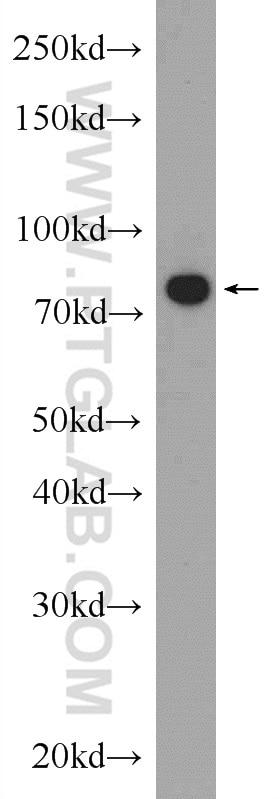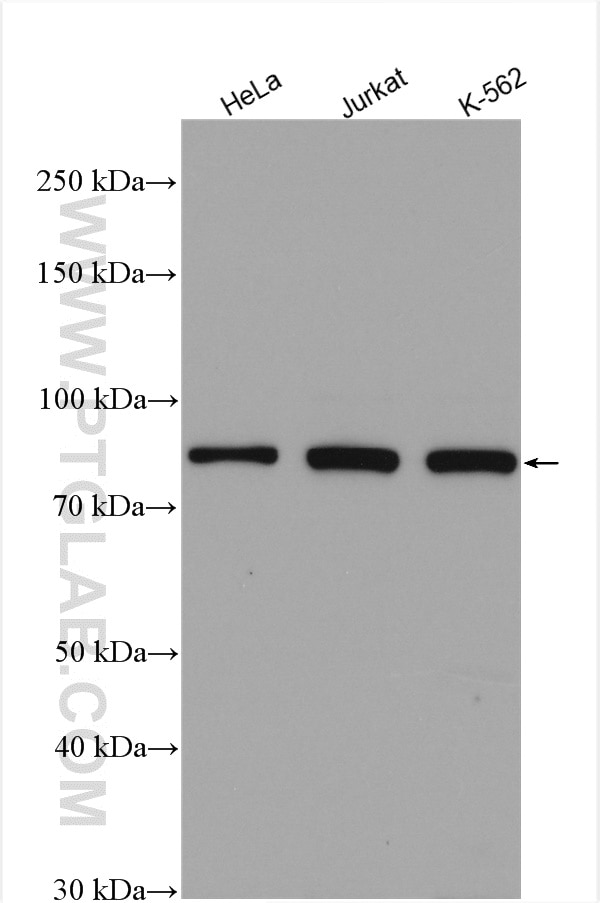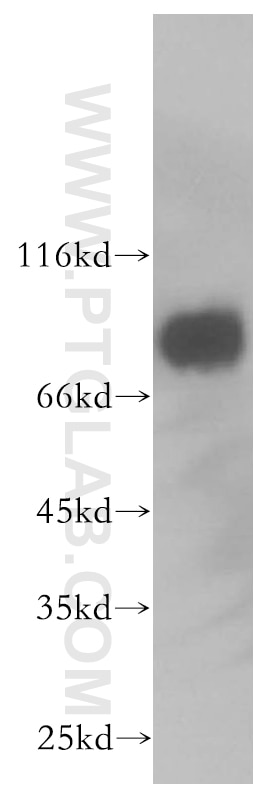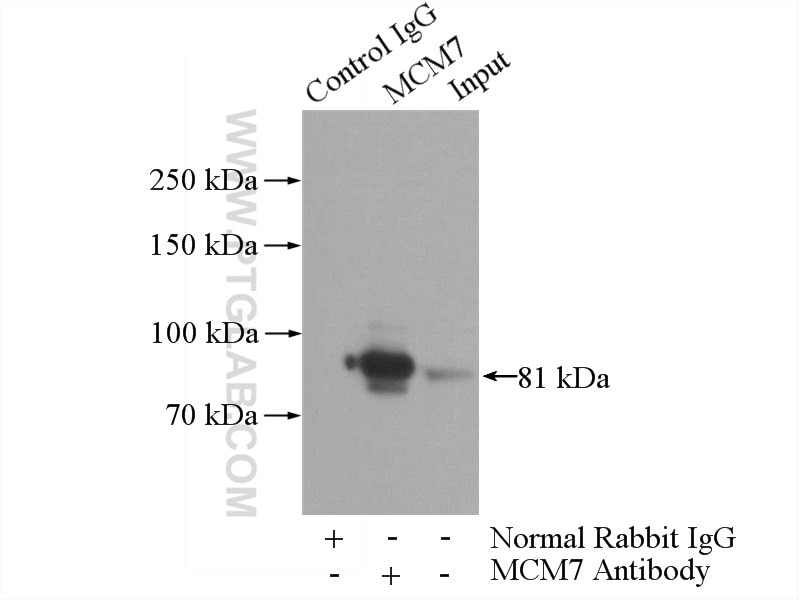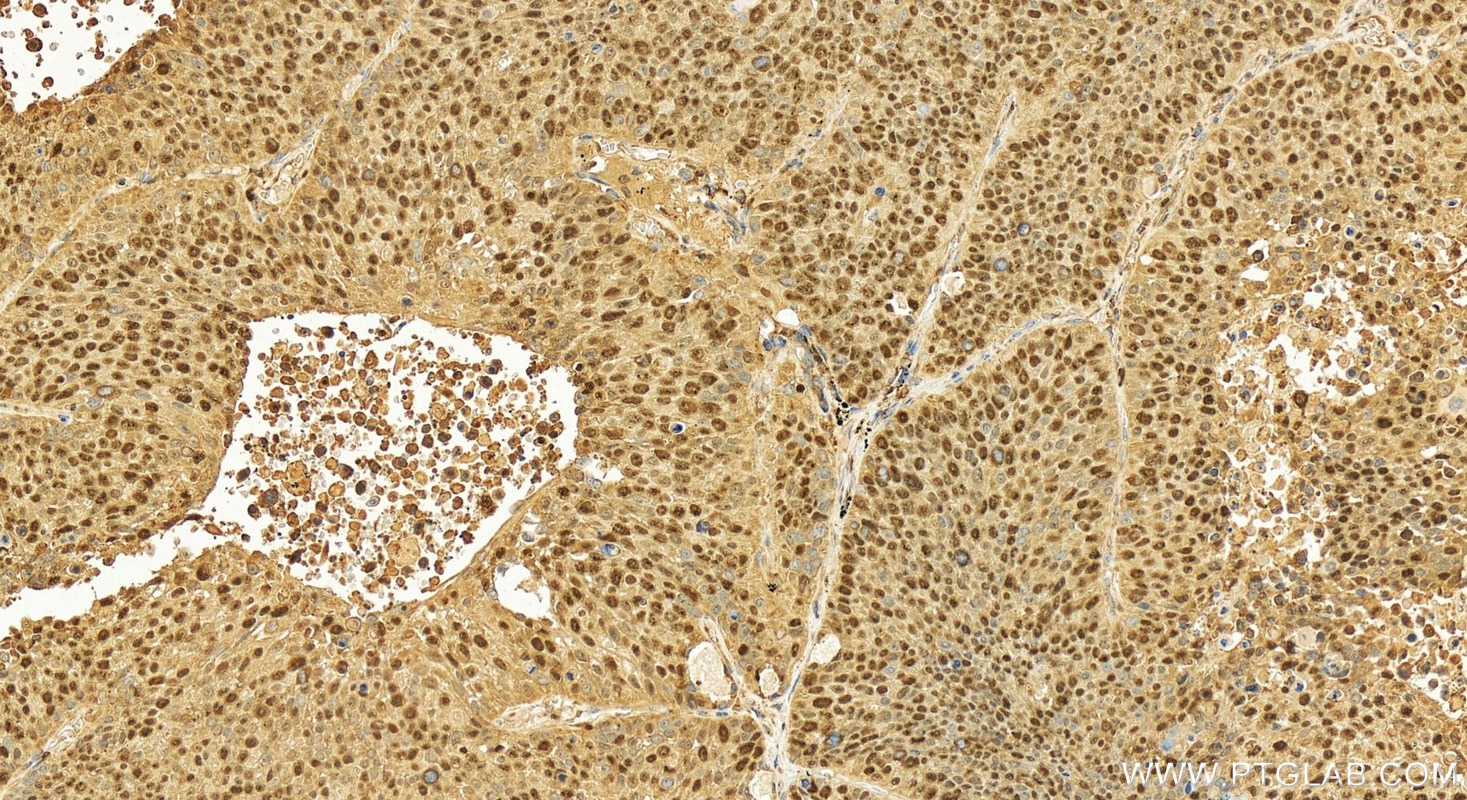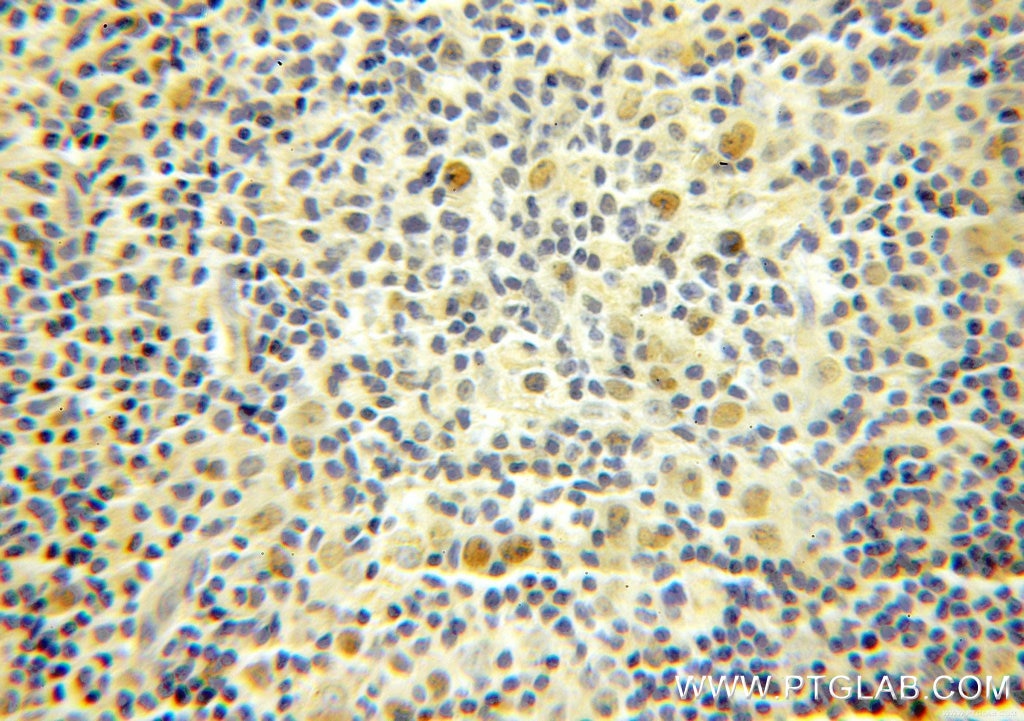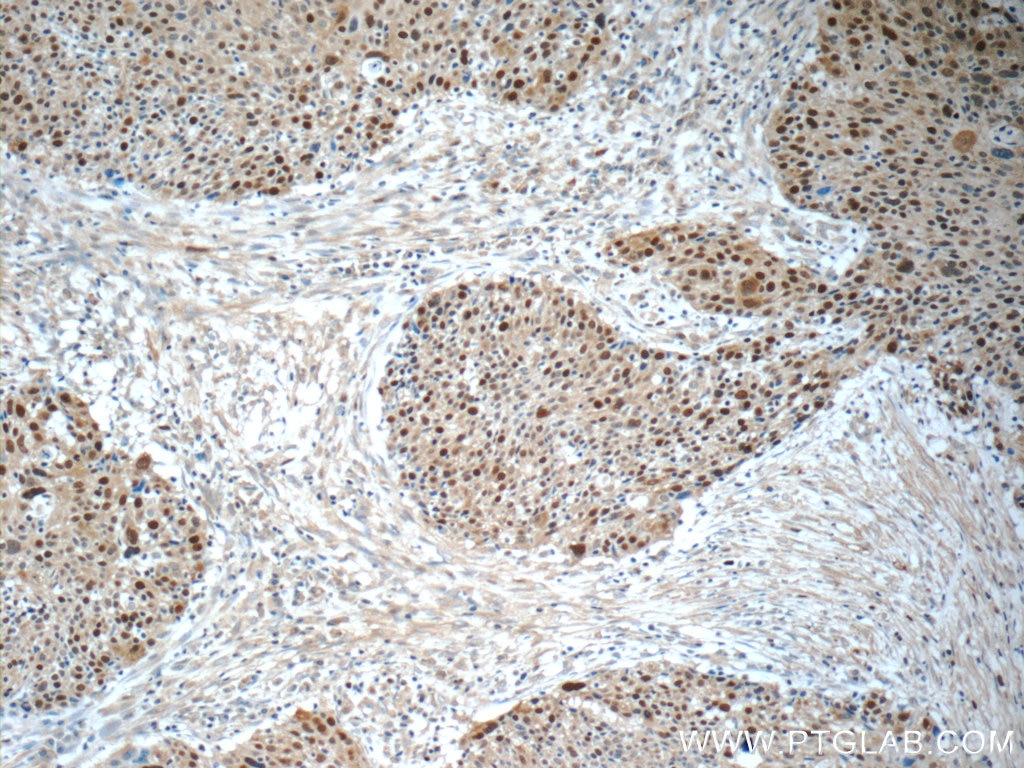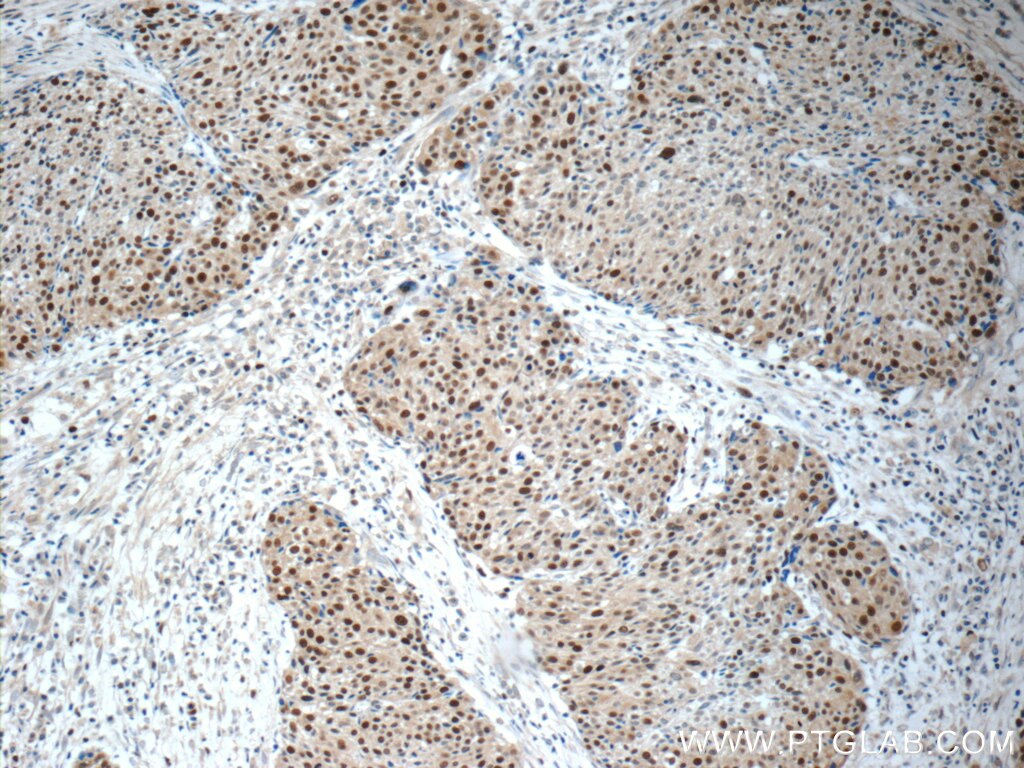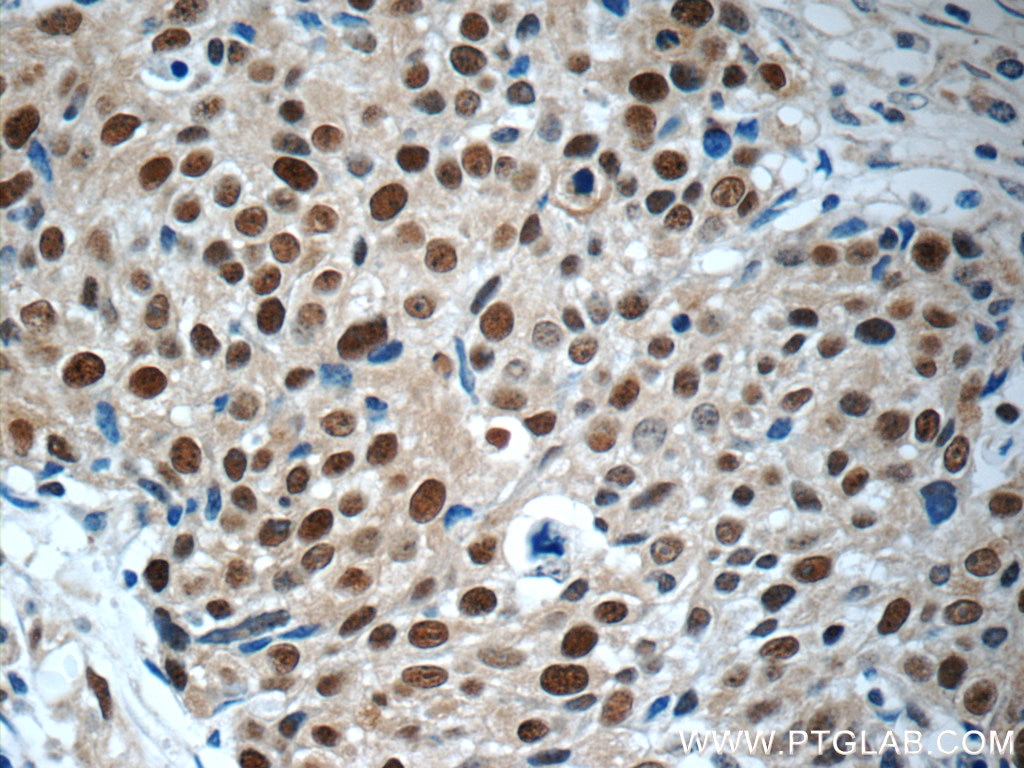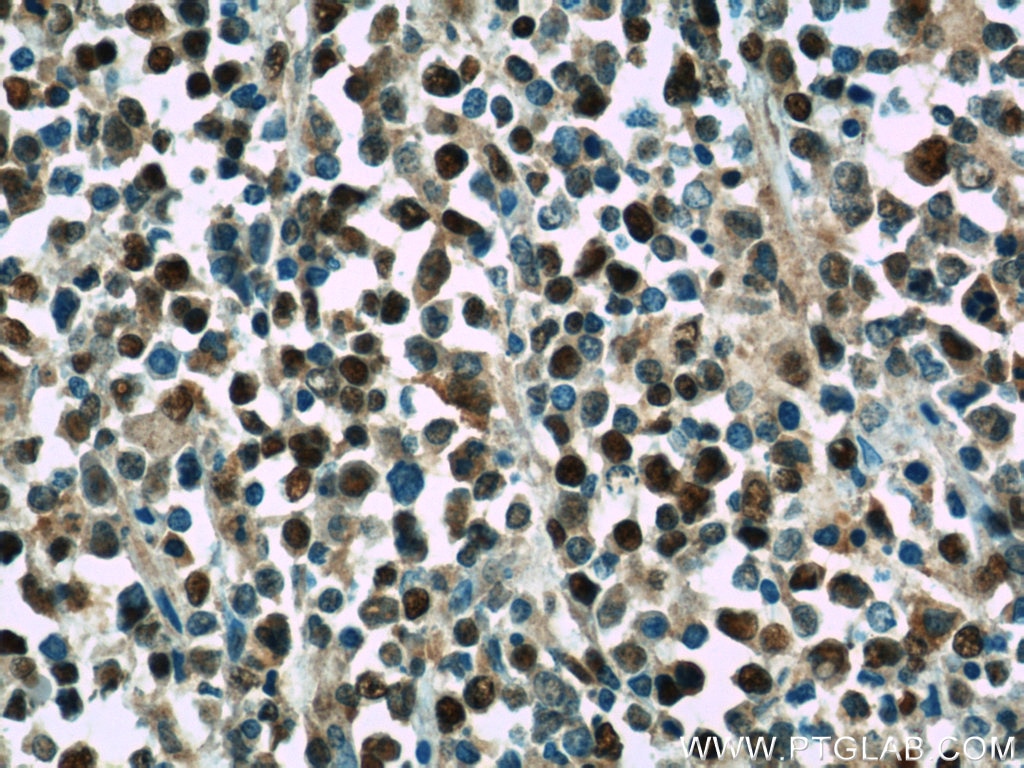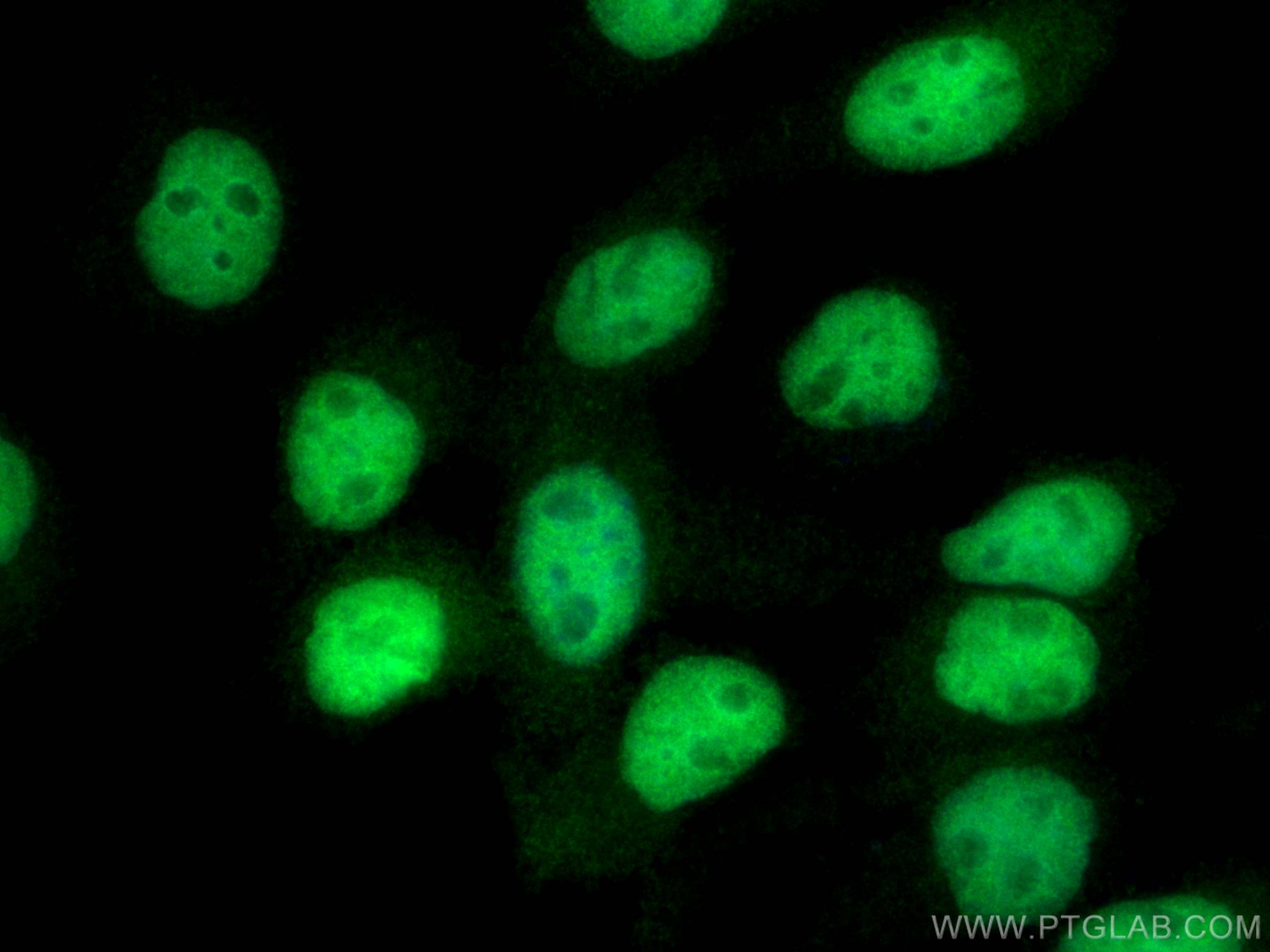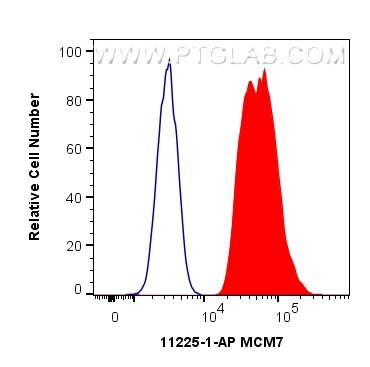Validation Data Gallery
Tested Applications
| Positive WB detected in | HeLa cells, MCF-7 cells, NIH/3T3 cells, Jurkat cells, K-562 cells |
| Positive IP detected in | NIH/3T3 cells |
| Positive IHC detected in | human lung squamous cell carcinoma tissue, human lung cancer tissue, human lymphoma tissue Note: suggested antigen retrieval with TE buffer pH 9.0; (*) Alternatively, antigen retrieval may be performed with citrate buffer pH 6.0 |
| Positive IF/ICC detected in | A431 cells |
| Positive FC (Intra) detected in | HepG2 cells |
Recommended dilution
| Application | Dilution |
|---|---|
| Western Blot (WB) | WB : 1:5000-1:50000 |
| Immunoprecipitation (IP) | IP : 0.5-4.0 ug for 1.0-3.0 mg of total protein lysate |
| Immunohistochemistry (IHC) | IHC : 1:200-1:800 |
| Immunofluorescence (IF)/ICC | IF/ICC : 1:50-1:500 |
| Flow Cytometry (FC) (INTRA) | FC (INTRA) : 0.40 ug per 10^6 cells in a 100 µl suspension |
| It is recommended that this reagent should be titrated in each testing system to obtain optimal results. | |
| Sample-dependent, Check data in validation data gallery. | |
Published Applications
| KD/KO | See 2 publications below |
| WB | See 18 publications below |
| IHC | See 4 publications below |
| CoIP | See 1 publications below |
Product Information
11225-1-AP targets MCM7 in WB, IHC, IF/ICC, FC (Intra), IP, CoIP, ELISA applications and shows reactivity with human, mouse, rat samples.
| Tested Reactivity | human, mouse, rat |
| Cited Reactivity | human, mouse |
| Host / Isotype | Rabbit / IgG |
| Class | Polyclonal |
| Type | Antibody |
| Immunogen | MCM7 fusion protein Ag1730 相同性解析による交差性が予測される生物種 |
| Full Name | minichromosome maintenance complex component 7 |
| Calculated molecular weight | 81 kDa |
| Observed molecular weight | 81 kDa |
| GenBank accession number | BC013375 |
| Gene Symbol | MCM7 |
| Gene ID (NCBI) | 4176 |
| RRID | AB_2297584 |
| Conjugate | Unconjugated |
| Form | Liquid |
| Purification Method | Antigen affinity purification |
| UNIPROT ID | P33993 |
| Storage Buffer | PBS with 0.02% sodium azide and 50% glycerol , pH 7.3 |
| Storage Conditions | Store at -20°C. Stable for one year after shipment. Aliquoting is unnecessary for -20oC storage. |
Background Information
MCM7, also named as CDC47 homolog or P1.1-MCM3, is a 719 amino acid protein, which belongs to the MCM family. MCM7 acts as component of the MCM2-7 complex (MCM complex) which is the putative replicative helicase essential for 'once per cell cycle' DNA replication initiation and elongation in eukaryotic cells. the MCM2-7 complex participates in the pre-replication complex formation and exhibits helicase activity which makes DNA unwind, and resulting in recruitment of DNA polymerases and initiation of DNA replication and elongation [PMID: 29463213 ]. An immunohistochemical study has shown that MCM7 is increased in HCC. Silencing of MCM7 with shRNA inhibits the malignant behavior of HCC cells via cell cycle arrest and apoptosis [[PMID: 29463213].
Protocols
| Product Specific Protocols | |
|---|---|
| WB protocol for MCM7 antibody 11225-1-AP | Download protocol |
| IHC protocol for MCM7 antibody 11225-1-AP | Download protocol |
| IF protocol for MCM7 antibody 11225-1-AP | Download protocol |
| IP protocol for MCM7 antibody 11225-1-AP | Download protocol |
| Standard Protocols | |
|---|---|
| Click here to view our Standard Protocols |
Publications
| Species | Application | Title |
|---|---|---|
Adv Sci (Weinh) Targeting CBX3 with a Dual BET/PLK1 Inhibitor Enhances the Antitumor Efficacy of CDK4/6 Inhibitors in Prostate Cancer | ||
Nucleic Acids Res DOCK7 protects against replication stress by promoting RPA stability on chromatin. | ||
Biomaterials Biocompatible PEGylated Gold nanorods function As cytokinesis inhibitors to suppress angiogenesis. | ||
Elife MCMBP promotes the assembly of the MCM2-7 hetero-hexamer to ensure robust DNA replication in human cells. | ||
J Nanobiotechnology Graphene quantum dots rescue angiogenic retinopathy via blocking STAT3/Periostin/ERK signaling. |
